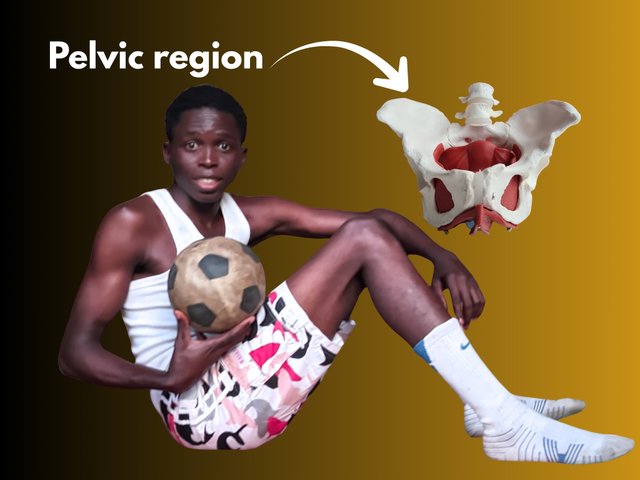Steemit Learning Challenge-S27W4; Physiofit; Pelvic Floor Strengthening
Do you pee while coughing? If so, then pelvic floor strengthening is for you; these muscles are very supportive to the pelvic region and need to be strengthened by minute physiotherapy exercises.
In the anatomy of living things and skeletal system lectures in biology, I have heard of the pelvic girdle, the ring-like bony structure in the body that has a joint where the spine and the lower limbs or hip bones get connected to. In this region, the body organs are also connected to it, organs like the bladder and uterus (in women). Here, every movement is controlled by muscle, and the muscles of the pelvic region are known as the pelvic floor. The pelvic floor is not just a muscle itself, but it contains other muscles. Now let's define the pelvic floor.
Whether a movement in the human body is slow or fast, they are all controlled by muscles, and for the pelvic region, the pelvic floor controls every movement here. The pelvic floor is a group of muscles and a region of connective tissue that supports organs which are in the pelvic region, including the bladder, intestines and uterus for women.
We have two types of pelvic floor muscles, the superficial and deep pelvic floor muscles. The superficial muscles have subordinate muscles that are not the main muscles of the pelvis region; they have muscles like the bulbospongiosus and ischiocavernosus muscles, which help in erection and urination. As the name implies, they are just superficial.
We have the deep pelvic floor muscles, which are the main pelvic floor muscles, of which the levator ani and coccygeus are a part; they form the pelvic diaphragm, and they provide primary support to the pelvic organs and their functions.
The type of pelvic floor depends on the severity, and each of them is in hierarchical order.
Hypertonic Pelvic Floor: This is the real pain in the pelvis region. The key to the muscles in the pelvis region is balance; if the muscles become overly tight or weak, then the patient is said to be experiencing hypertonic pelvic floor. One experiencing this could have difficulty passing out urine, defecating
Hypotonic pelvic floor is a condition that causes difficulty in controlling bowel movements and lack of sexual sensation when the pelvic muscle becomes weak and loses its elasticity.
Normal Pelvic Floor, as the name implies, is a healthy pelvic floor with muscle balance enough to control certain movements in the pelvis region. In this condition, the muscles are able to contract, relax, and become stretched as needed during any activity that requires muscular contractions, like coughing or exercising.
Chronic coughs in asthmatic patients or people who cough after smoking cigarettes can stress the pelvic muscle by weakening it when it expands frequently.
Neurological diseases like stroke affect the nerve that connects the pelvic floor to the brain. When a person feels the nerves connect, the pelvic floor sends a signal to the brain, and it reverses back with a response. When a person has a stroke, this nerve malfunctions and may not send a signal indicating when to contract or release urine. At this point, a pelvic floor wakening is said to have occurred.
Heavy lifting: you may be wondering why weightlifters don't experience this. Now, I'm properly positioning the pelvic muscle, which can never be weak or too tight. In lifting weights, one needs to position the body well before lifting them, as pelvic floor malfunctioning.
Patient History/Symptoms
I held urine for some time since I didn't see a comfortable space to ease out. After some time I felt a little weakness in my bladder. I think this expanded my bladder region. How did I know this? I will feel like so much urine has accumulated in the bladder, but when I go to urinate, I pass out just a little urine; after some time, it goes away on its own.
Today I don't feel any effect, but I am sure practising physiotherapy pelvic floor strengthening will help keep my pelvic floor muscles in a balanced state.
To improve and keep my body in its balanced state, I need to practise this exercise in this order.
- Hip Bridging Exercise
- Pelvic Tilt
- Glutes and Abductors Squeeze
A video that contains how I perform all this exercise is below, check it out @ashkhan in SPEEM IPFS or watch it directly using this SPEEM link
https://speem.watch/p/nsijoro/steemit-learning-challenge-s27w4-physiofit-pelvic-floor-strengthening
I would love @dwings, @whitie, @ngoenyi and @bossj23 to join this challenge
Posted with Speem




Upvoted! Thank you for supporting witness @jswit.